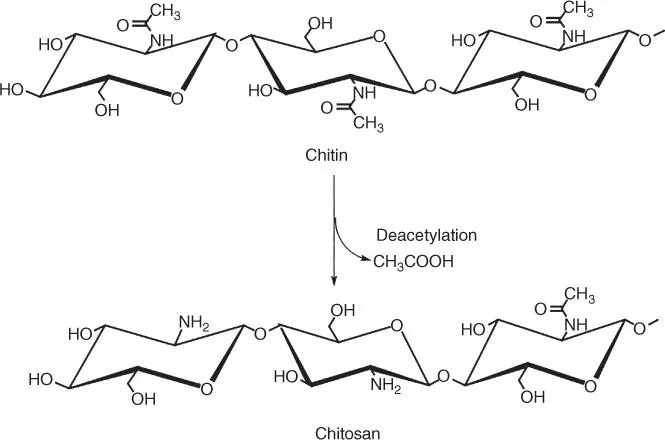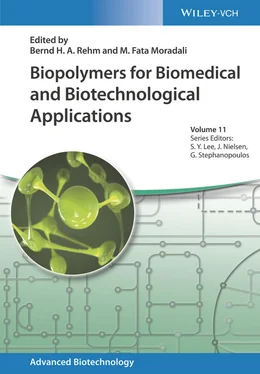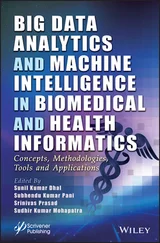2.6.2.3 Anticoagulant and Antithrombotic Activity
Coagulation factors are essential elements in blood coagulation as they stop blood flow through an injured vessel wall. Anticoagulants interfere with the coagulation factors and are used for therapeutic treatments, for example, in hemophilic patients [197]. The most commonly used anticoagulant/antithrombotic compound, heparin, can cause several unwanted side effects [198]; thus many studies focused on the anticoagulant properties of bioactive molecules, including algal polysaccharides. The anticoagulant activity of macroalgal polysaccharides such as carrageenan and fucoidan has already been reported [197,198]. However, little is known for microalgal polysaccharides, even though the anticoagulant activity seems to be directly related to high sulfate content of the polysaccharides, which is often a characteristic of microalgal EPS [191]. Despite the high content in sulfate, Cochlodinium polykrikoides did not have anticoagulant activity [48], which indicates that other factors might be involved in the anticoagulant effect of polysaccharides, namely, the sugar composition, branching pattern, position, and distribution of sulfate groups [187,191]. Nevertheless, calcium spirulan had a significant anticoagulant effect based on specific enhancement of thrombin inhibition by heparin cofactor II [61].
2.6.2.4 Antioxidant Activity
Free radicals such as ROS can cause oxidative stress in living organisms, and, in humans, oxidative stress is associated with the occurrence of cancer, diabetes, neurodegenerative diseases, and cardiovascular problems [198,199]. The central nervous system (CNS) is particularly vulnerable to oxidative stress due to its high oxygen requirements and lipid content. Oxidative stress in the CNS is related to neuronal death and the progression of several neurodegenerative diseases such as multiple sclerosis, Alzheimer's diseases, and Parkinson's diseases [200]. Antioxidants can enhance the activity of antioxidant enzymes, scavenge free radicals, and inhibit lipid oxidation [41]. Crude EPS from Rhodella reticulata had antioxidant activity, and a ROS scavenging capacity was much higher than the standard antioxidant α‐tocopherol [47]. The molecular weight of the polysaccharide might influence the antioxidant properties of these molecules. For example, only the low molecular weight EPS from P. cruentum inhibited oxidative damage in mouse cells and tissues [41]. Furthermore, the sulfate and uronic acid content, structure, and conformation of the polysaccharide might impact their antioxidant properties [191]. Due to their valuable antioxidant properties, microalgal polysaccharides have a great potential to be used as neuroprotective agents; however, further investigation in the CNS is needed.
2.6.2.5 Other Biological Properties
Microalgal polysaccharides might be useful to treat microbial infections since they can block the adhesion to the host cells and inhibit pathogen growth. In fact, sulfated polysaccharides from microalgae sources inhibited the adhesion of human pathogen Helicobacter pylori and the fish pathogens Vibrio campbellii , Vibrio ordalii , Streptococcus saprophyticus , and Aeromonas veronii [201]. Antimicrobial activity has also been reported for polysaccharides secreted from P. cruentum [45] and A. platensis [60]. EPS from Porphyridium purpureum had antimicrosporidian activity, inhibiting the growth of the honeybee parasite Nosema ceranae [43].
Furthermore, sulfated polysaccharides from macroalgae and marine animals were successful in the inhibition of the enzyme responsible for cholesterol absorption in the intestine, human pancreatic cholesterol esterase. This effect seems to be related to high sulfate content and molecular weight and the presence of 3‐sulfate in the monosaccharide molecule [191]. Thus, microalgal polysaccharides might have an important role in cholesterol regulation. Despite the lack of studies (Table 2.3), both Porphyridium sp. biomass and sEPS had hypocholesterolemic effect, decreasing the accumulation of hepatic cholesterol and lowering the plasma triglycerides and very‐low‐density lipoprotein (VLDL) cholesterol levels in rats fed with high cholesterol diets [38]. Moreover, EPS from P. cruentum had antiglycemic properties and reduced the blood glucose level in diabetic rodents [44].
Sulfated polysaccharides might have a promising future as biolubricants due to their rheological properties. In fact, the sEPS from Porphyridium sp. had a better lubricant effect than the most used lubricant hyaluronic acid, with better results in reducing friction and wear under different simulated joint efforts. These results are related to the great rheological stability over a range of temperatures, pH, and salinities [37]. Furthermore, this sEPS was successfully patented to be a compound in joint‐lubricating products to treat degenerative joint disorders caused by arthritis, due to the promising results demonstrated by injecting the sEPS in joints of rabbits' knees [202].
2.6.3 Commercialization Prospects
The exploitation of microalgal polysaccharides holds great potential of development, representing a sustainable and environmentally friendly strategy to capture CO 2while producing high‐value products with interesting application in therapeutics, cosmetics, and regenerative medicine. However, microalgal polysaccharides had difficulties to enter the market, mainly due to the existence of cheaper alternatives such as macroalgal (e.g. carrageenan, fucoidan, agar) and plant (e.g. guar gum and xanthan gum) products [203]. Nevertheless, there are already some successful examples of the application of microalgal polysaccharides mainly associated with the cosmetic area, such as the sEPS from the red algae Porphyridium sp., marketed by Frutarom under the trade name Alguard™ [6]. Alguard has been used in cosmetics as an antiaging, anti‐irritant, UVB damage protection, anti‐inflammatory, lip balms, healing, and smoothing creams [191]. Also, Algenist™ is a cosmetic product capable of improving health and skin appearance, consisting of a mixture of microalgal polysaccharides named alguronic acid [204]. Furthermore, polysaccharides from microalgae Haematococcus pluvialis and P. cruentum showed antiaging effects, envisaging their use as active ingredients in cosmetic and pharmaceutical formulations [75,205].
2.7 Applications of Chitinous Polymers
2.7.1 Chitin, Chitosan, and Chitinous Polysaccharides
Chitin is the second most abundant polysaccharide available in nature after cellulose. Composed of N ‐acetyl‐D‐glucosamine and N ‐glucosamine units ( Figure 2.5), this polysaccharide can be found on both animal and microbial sources. The chitin extracted from microorganisms is advantageous over the chitin from animal sources, due to several factors: the microbial cultures achieved high growth rates and high cell densities, there is no seasonality of the raw material, the composition of polysaccharide is more stable and controllable, and the microbial chitin is allergen‐free, which is very important in case of pharma/biomedical applications [207].

Figure 2.5Deacetylation reaction of chitin to chitosan.
Source: Croisier and Jérôme 2013 [206]. Reproduced with permission of Elsevier.
Microbial chitin is a cell‐wall component of several yeast and fungi strains, conferring rigidity and protection to the cells [208,209]. Depending of the fungal source, chitin can achieve a cell‐wall content up to 60% on a dry basis [207]. It is also possible to find chitin polysaccharides in some algae species [210,212].
Читать дальше













